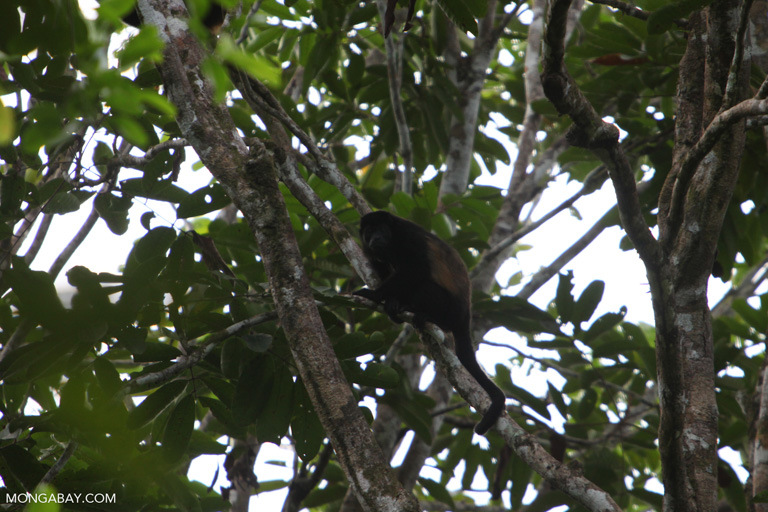- In a recent study, scientists report that howler monkeys in Costa Rica make longer calls in forest interiors and near naturally occurring forest edges, such as those along rivers, than near human-created edges.
- The researchers believe that the longer howls serve as a way for male monkeys to protect their groups’ access to higher-quality food resources.
- The team’s findings indicate that this behavioral change in response to deforestation supports the protection of standing forest and reforestation along human-created forest edges.
Howler monkeys change their calls when they’re close to deforested areas, a new study has found.
A team of researchers, led by anthropologist Laura Bolt of the University of Waterloo in Canada, looked at the frequency and intensity of mantled howler monkey (Alouatta palliata) calls through several different study zones in Costa Rica in 2017 and 2018.

They found that calls were longer among groups living in more pristine environments. As monkey groups moved closer to forest edges created by humans — breaks in the forest created by agricultural plantations, for instance — their calls grew shorter.
Bolt and her colleagues don’t know yet whether this shift points to a change in the monkeys’ chances at survival, she said, but it is clear that the human-caused deforestation that creates forest edges is changing their behavior.
“This is just one of the many ways that howler monkeys are affected by deforestation,” Bolt said in a statement.
![A male howler monkey at a wildlife sanctuary in Costa Rica. Image by Steven G. Johnson via Wikimedia Commons (CC BY-SA (https://creativecommons.org/licenses/by-sa/3.0)].](https://imgs.mongabay.com/wp-content/uploads/sites/20/2020/01/19041048/1024px-Sitting_Alouatta_palliata_Costa_Rica.jpg)
The team looked at how the calls morphed as monkey groups moved through the forest interior, along forest edges created by river banks, and near edges created by humans.
Scientists aren’t sure exactly why howler monkeys howl, their calls traveling for kilometers through the canopy. But Bolt and her colleagues suspect that the behavior has something to do with warning other monkeys that a set of plentiful food resources is spoken for.
“Howler monkeys eat leaves and fruit, and if they are howling to defend these resources, we predicted that males would howl for longer durations of time when in a forest interior or near the river edge, where vegetation is richer compared to anthropogenic edge,” Bolt said.

Monkeys — males, specifically — howled the longest when they were near higher-quality sources of food, which occur more often deep in the forest or along natural edges than along fences and plantation edges.
It’s evidence, the authors reported Dec. 3 in the journal Behaviour, that conservation efforts aimed at protecting these monkeys should focus on maintaining standing forests and the naturally occurring edges near rivers, as well as helping the forest come back in places where humans have created forest edges.
Banner image of a mantled howler monkey in Costa Rica by Scott Robinson via Wikimedia Commons (CC BY 2.0 ).
Citation:
Bolt, L. M., Russell, D. G., Coggeshall, E. M., Jacobson, Z. S., Merrigan-Johnson, C., & Schreier, A. L. (2019). Howling by the river: howler monkey (Alouatta palliata) communication in an anthropogenically-altered riparian forest in Costa Rica. Behaviour, 1(aop), 1-24. doi: 10.1163/1568539X-00003582
FEEDBACK: Use this form to send a message to the author of this post. If you want to post a public comment, you can do that at the bottom of the page.
